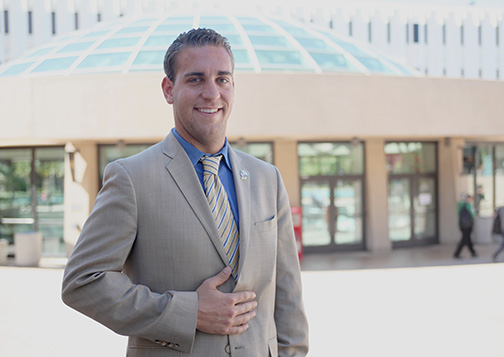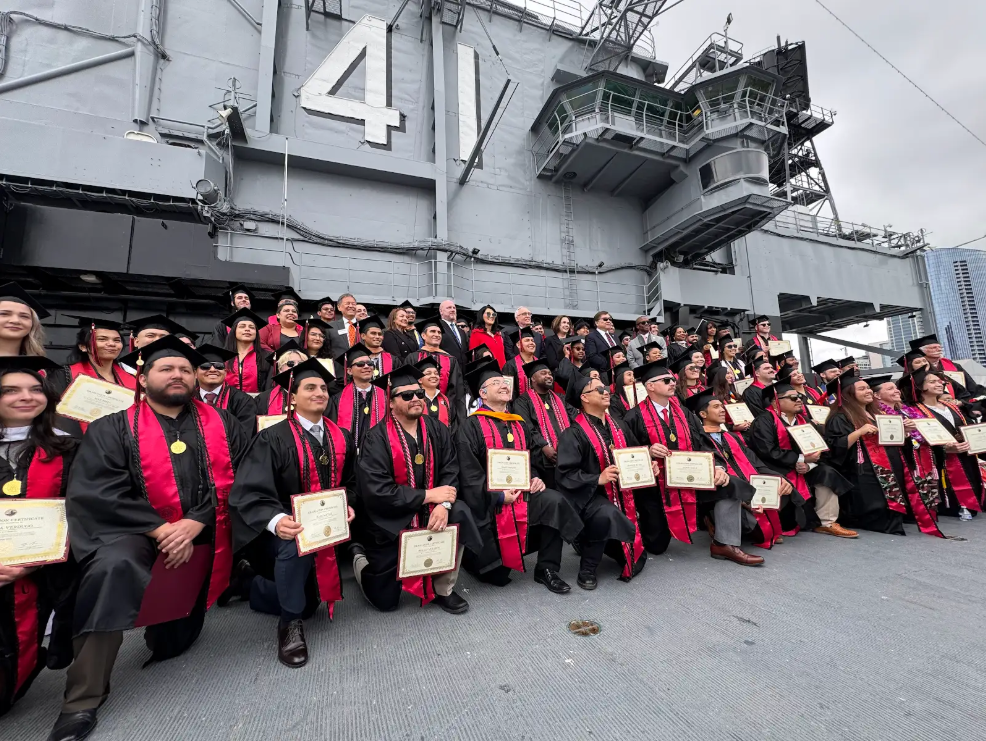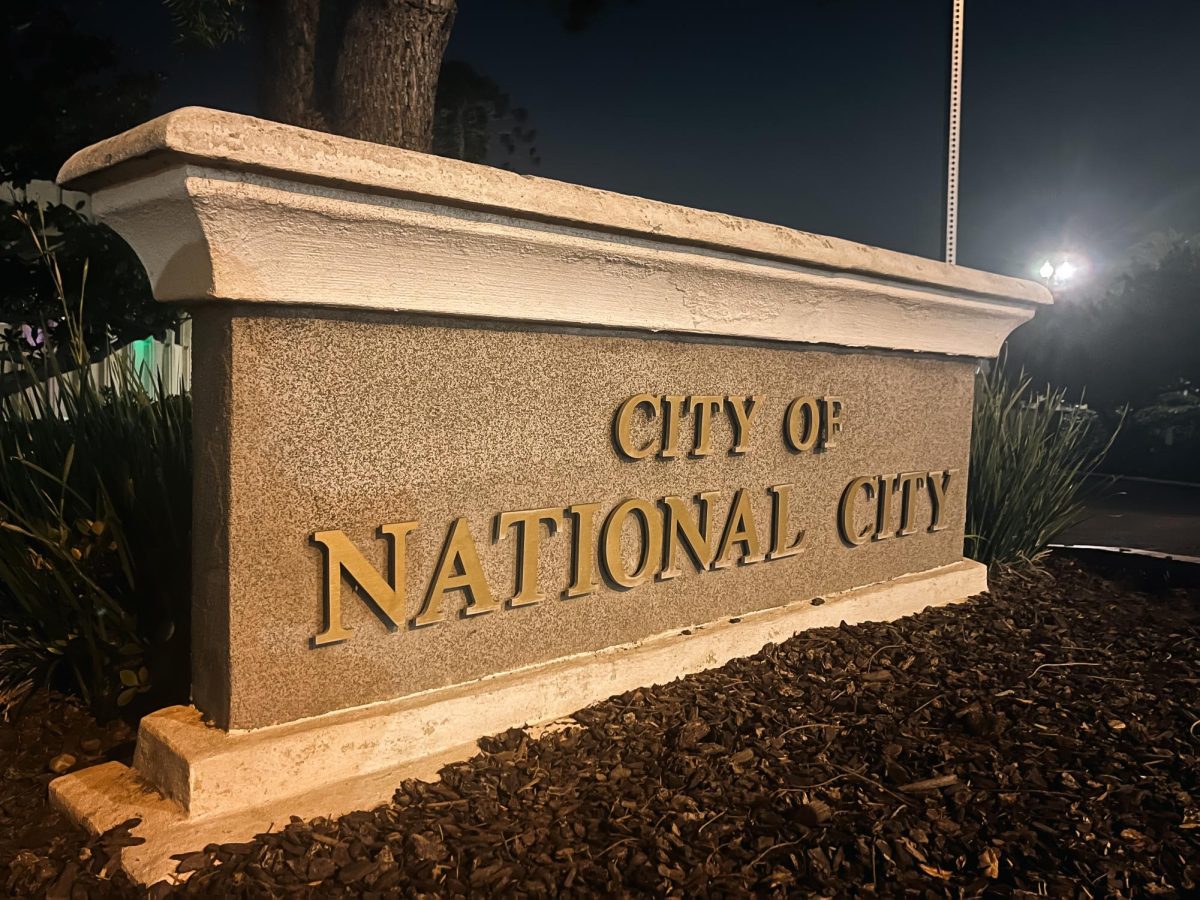The Aztec: How would you improve transparency in San Diego City Hall?
Michael Kemmer: One of our ideas from the very beginning has been open source. Basically, everything that can be measured will be, and it’ll be pumped out to the public—everything from MTS to wait times at the DMV to efficiency of the different city departments. The citizens can use that data and act on it in any way they see reasonable.
Also, Bob Filner said he would meet with the citizens every Saturday or one Saturday a month, and people enjoyed that. They actually had a chance to interact. But, the fact that it was downtown—you had to use a weekend to go downtown to share your opinions—we want to be proactive and come to people and ask for their opinion with their city council person.
TA: How would city planning changes initiated by San Diego Planning Director Bill Fulton change with you as a mayor?
MK: One of the things is really working with him and focusing on sustainability—walkable communities, right? Those of us who go to San Diego State know we’re really limited with what’s in the area. You can walk to Vons and Ralphs and that’s about it. You don’t have a whole lot of choices. And in other communities in San Diego, it’s really similar. We need to plan ahead in terms of zoning and in terms of commercial and residential areas. Make sure they are intermingled.
TA: If you were only able to make one specific change or complete one project as mayor, what would it be?
MK: Technology. I know it sounds so cliché, but the fact is that other cities are leaps and bounds ahead of where we should be.
TA: Can you think of one specific project?
MK: I don’t know of a specific tech project, so I would have to say push for all of it.
Charter reform, if nothing else, right? People are like, “Oh, we don’t need to reform the charter; it’s no big deal,” and now we have a $6 million election, and that is sort of a big deal. The charter was passed in 1937 or 1941, and ever since then it’s just been constantly—they’ve added on, right? They’ve been duct taping the sinking boat and for political reasons, it hasn’t been revised as it should. In L.A. they did revise the city charter and we want to do something like that—make it more efficient. Make the rules of the city so they don’t contradict with state law and federal law in some cases. Then what do you do? No matter what you do, it’s a lose-lose situation. So, if I could do one thing and nothing else, it would be charter reform.
TA: What would you do to attract more high-skilled jobs to San Diego for college students?
MK: Make the city more business friendly to work with. For example, San Francisco was ranked “C-“ in terms of how easy it is to do business. San Diego is ranked “F,” and then people wonder why we have 20 percent unemployment for a year. They are in California; they play by the same rules we do. The difference is it’s easier to do business in San Francisco because the city makes it that way versus here you have to jump through so many loopholes, so many hoops, just to start a business. It’s insanity, right? San Francisco can point to all their start-ups, all of Silicon Valley; we can point at Qualcomm, which is a huge success, but we should have more of that, especially given our systems of higher education.
TA: And what would you do to make the process easier?
MK: Streamline. A good example, San Diego had a small-business consulting center, and it’s kind of telling that they have to have consultants provided by the city to navigate the city’s own rules, right? It’s like, do you not see that there is something wrong there? So that’s something. Look at those rules and, well, why are they the way they are? What are other cities doing? Because, obviously, they are making it work. Things aren’t falling apart and going to hell in these other places. In fact, they have lower unemployment rates. Raleigh, N.C. is an example we keep citing. They have one of the best job markets for recent grads, right? Whereas in San Diego, unfortunately, a lot of us go here, love it here and would love to stay here, but we can’t because the careers we want or are looking for aren’t here.
TA: What are the challenges and benefits of a short election?
MK: I guess the challenge is getting your message out, and in our case, you know, proving to people that you are a legitimate campaigner, right? Because, obviously, being 22 they’re like, “No. You can’t do this. You shouldn’t do this. Blah, blah blah.” But, comparing when we did that first article to where we are now, we just had a debate, a forum, the other night in San Ysidro. We were on stage with Mike Aguirre, Mr. David Alvarez and a few other candidates, so you really have a very short amount of time to get your message out. You have to go fast. You have to go hard. You have to get it out there. That’s, I guess, a downside.
The benefit is that, to some extent, it does allow outsiders like us to compete, right? Because with most elections there’s months of ramp-up time where the lead candidates can get the political machines going. This case, it was a surprise to everyone, so it’s out-of-the-blue for everyone.
TA: What’s your message for SDSU students?
MK: Get engaged. You can make a difference. Of anything else, that’s been the big take-away from this campaign. We’ve all heard people be like, “Man, I wish things weren’t this way. I wish this was different. I wish this would change.” You can make a difference. Does it take a lot of work? Absolutely. But, it’s possible. It’s within your reach; it’s within my reach; it’s within all of our grasps. You just have to go and make that change, make that difference.
TA: In one word, how are you different and a better alternative than the top four?
MK: Spontaneous. If you look at all of the candidates, especially the main ones, they really reflect the status quo. Our campaign started just like that—took off. Day-to-day things keep changing and it’s that energy that keeps us all going.
Photo by Monica Linzmeier, Photo Editor







